Welcome to another exciting edition of Cranetivities! This week we are learning more about what you can do to help birds and the environment. These activities will let you become a conservation hero. See last week’s edition of Cranetivities here.
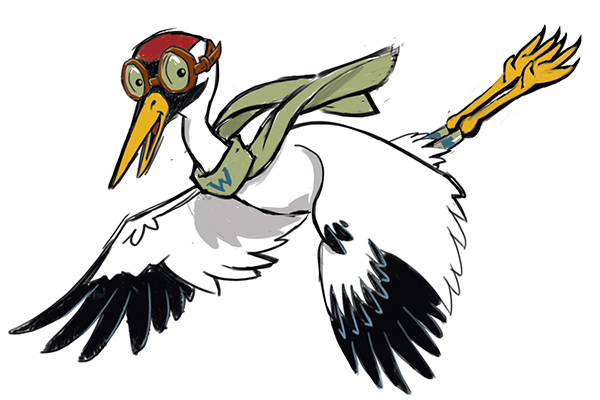
Activity Description: Helping to protect birds and the environment is a big task. Teamwork and help from many people are important for the success of conservation. This week, you will learn about some ways you can help to be a conservation hero! We challenge you to do at least two of these activities this week, or you can try doing them all!
Grades: All ages (including adults)
Time estimate: 1 to 3 hours
Topics covered: Conservation Science
Materials needed: Internet connection, plastic/garbage bag
Audubon DIY Bird Feeder:
Adult supervision required
One milk or juice carton
Rope, cord, ribbon or wire
Acrylic paint
Paintbrushes
Decorations recycled from household materials, crafts or nature
Craft or hot glue
Seeds
Audubon Window Clings:
Puff paint OR Elmer’s glue, dish soap and markers
A smooth plastic surface like a sheet protector, sandwich bag or plastic wrap.
A paintbrush
Stencils for tracing (optional, since you can make your own)
Adult involvement: Yes
Indoor or outdoor: Indoor and Outdoor
Links:
Find Elected Officials Contact Info
Tips on Writing to Your Elected Representatives
International Crane Foundation: Species Field Guide
Audubon Activity: DIY Bird Feeder
Audubon Activity: Window Clings
EPA: Why Wetlands are Important
International Crane Foundation: Membership
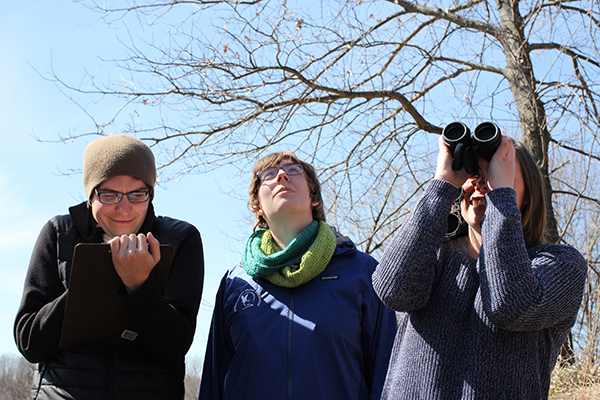
Community Science
In a previous blog post, we discussed the topic of community science. Community science projects are an excellent way for people to help scientists gather data. You can go bird watching and report your sightings for community science projects. One of the best things about birdwatching is it can be done entirely for free. Today we will focus on using eBird and the International Crane Foundation’s reporting website.
You can start by just taking 10 to 15 minutes to watch and record the birds from your own home. Try to write down the bird species and how many of each species you see. If you are not as familiar with identifying birds, a helpful resource is the Merlin Bird ID app by Cornell Lab of Ornithology. The Merlin Bird ID app is a free digital field guide that also has a feature that can assist you in figuring out what bird you are looking at, based on a few questions and answers. After you have watched and recorded your sightings, it is time to report them on the eBird website.

The International Crane Foundation also collects data on crane sightings. If you see a Sandhill Crane with leg bands, please let us know by using the “Report a Banded Sandhill Crane” function at this link. If you see a Whooping Crane, please let us know by using the “Report a Whooping Crane” form at this link. Thank you for your support in helping us protect cranes.
Write a Letter
Voicing your thoughts and concerns to your government representatives is important. Your government representatives are the ones that make changes in policies that affect us and our environment. They need to hear from you about your thoughts and concerns so that they can consider these when they are making important decisions. You can let them know what you think about their laws and policies by writing a letter to them – this is a great way to make your voice heard!
There are many issues about which you could write to your representatives, including items that directly impact cranes and other birds. Birds are currently losing more and more protection. We encourage you to learn more about the Migratory Bird Treaty Act or the Endangered Species Act, and then you can use what you learn when you write your letters.
To begin contacting your government representatives, please follow this link to find their contact information. This link will allow you to search for your representatives based on location. Depending on where you live, the way of contacting your official may be different. Once you have found the contact information that you need, you will need to start writing your letter! This link will provide some tips and best practices for writing to your elected officials.
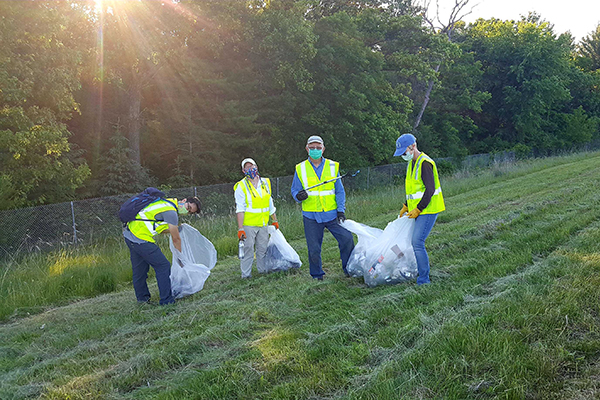
Trash Pickup
Litter not only looks bad in the environment, but it causes harm too. Animals can mistake litter for food and can choke or be entangled in the litter. Humans also rely on the environment to get water and food. The more litter and pollution that we put into the environment, the harder it is for us to have healthy food and water.
You can help keep our environment clean by making sure that you properly throw away your trash. The next time you go on a walk or hike, bring a garbage bag and look out for any litter. If you find any, pick it up and throw it away. It is that simple! Please check to see what you can recycle in your local area. Just make sure that you are safe and don’t pick up anything that can be dangerous. If you are unsure what something is, it is better to be safe and to leave it on the ground. The photo above shows the International Crane Foundation staff at our Adopt-a-Highway cleanup. We encourage you to look for opportunities like this to make your community a better place.

Spreading the Conservation Message
One of the best and easiest things you can do to help cranes or the environment is to talk to people. Let others know that you care and that these are important topics to you. When your friends and family see how important these issues are to you, they will want to help, too!
It is important to stay informed about what you are talking about to your friends and family. Reading and learning about cranes or the environment is a great first step. You can start by visiting our website at www.savingcranes.org and reading about the 15 crane species. Another important thing to know is how to identify different bird species, including cranes. Please see the International Crane Foundation’s page on Birds Similar to Cranes. Once you’ve learned more about cranes, tell someone about all of the exciting things you learned! You can share with families, friends, neighbors or even on social media like Instagram, Facebook or Twitter.
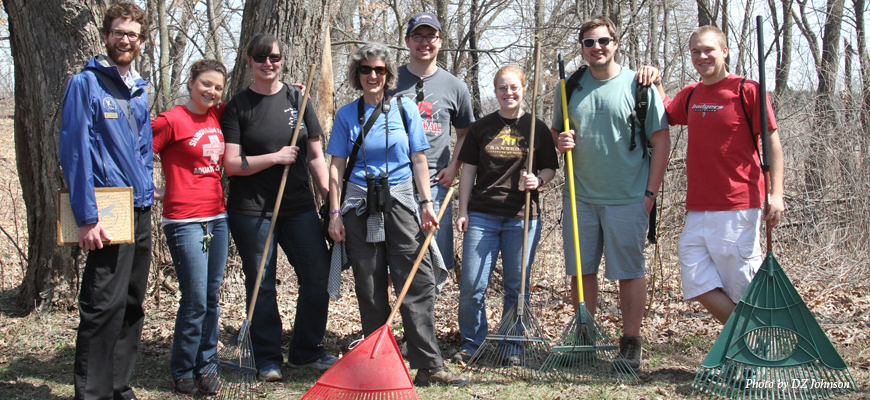
Volunteering
There are many organizations, like the International Crane Foundation, that have a mission to protect the environment. Search in your area to see if any local organizations are looking for volunteers. Volunteer opportunities may be scarce during these times, but there might be some safe options available near you. Here at the International Crane Foundation, we rely heavily upon our volunteers and we are always grateful for the extra help and support!
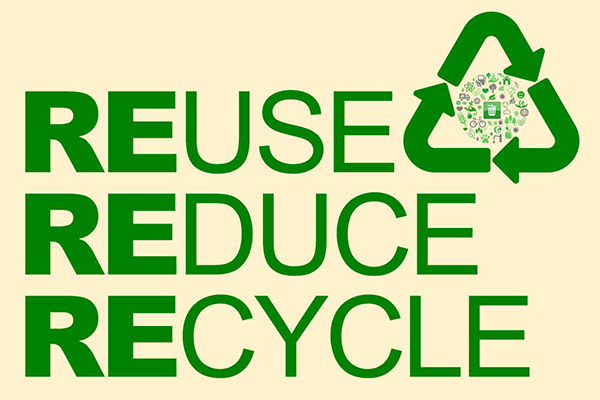
Reuse, Reduce, Recycle
Recycling and reusing can help the environment because it allows us to produce less waste. It will reduce how many resources we will need to take from the Earth. The process of gathering resources can cause air and water pollution. If your family is not already recycling, please let them know how important it is to recycle.
Do you have any old milk cartons? The National Audubon Society can help you repurpose a milk carton into a bird feeder! Not only are you reusing something you would have otherwise thrown away, but you are also feeding birds. If any birds visit your feeder, be sure to report any of your sightings to eBird! See this link from the National Audubon Society on making a bird feeder from an old milk container.

Preventing Bird Collisions: Window Clings
Windows are a big threat to birds. Birds see the reflection in the windows and believe that they can continue flying. Window collisions can cause serious injury and even death for many birds. We can help birds by putting things on our windows that will break up the reflection so that birds understand that they are solid objects. A fun activity that the National Audubon Society has made is making puffy paint window decorations. Please see this link to learn more about making fun window decorations that can help birds.
Saving Water
There are places around the world and even in the United States, where water is scarce and not easily accessible. All living things on Earth rely on water to survive. It is up to us to have better habits of learning how to conserve water so that we are using this limited resource more responsibly. Check out this link from the EPA to learn more about what you can do for water conservation.
Wetlands are essential habitat for cranes and many other species. We rely on wetlands for things like food, flood control, water quality and more. Please see this link to learn more about why wetlands are important. We hope that you will help us in supporting wetland conservation.
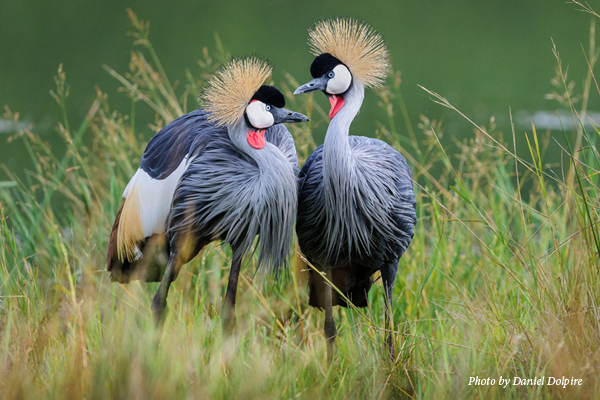
Join the Flock!
Much of our work is made possible by our International Crane Foundation members. If you are a member, we especially thank you for all of your support. Please learn more about supporting our conservation work as a member here. Members receive many benefits like discounts or free admission to other AZA-accredited zoos and aquariums. Visit the link to see the full list of benefits.
Got feedback? We would love to hear your thoughts on our educational resources. This survey will allow you to provide feedback on our Cranetivities series. If you have used any of our other educational resources, like our From the Field series or our online activity packets, you may provide feedback on those resources here. You may also email us at info@savingcranes.org if you have questions or comments for us, or would like to share photos of you and your kids’ crane creations! We will see you next week for a new edition of Cranetivities!
